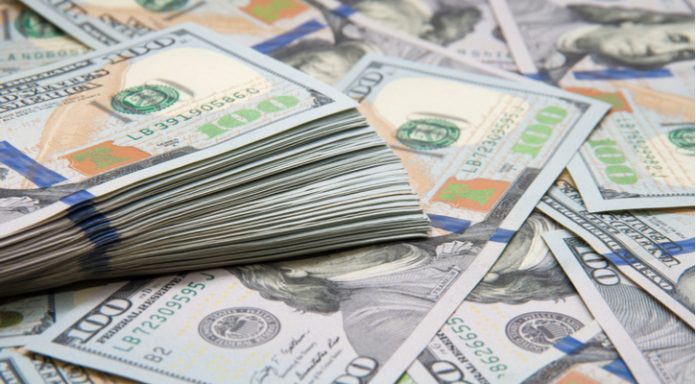The pound jumped higher versus the dollar on Monday on the back of Brexit hopes and US trade war fears. Sterling climbed to a high of US$1.3874, its highest level in three sessions after hitting a 7-week low last Thursday.
| What do these figures mean? |
|---|
|
When measuring the value of a pair of currencies, one set equals 1 unit and the other shows the current equivalent. As the market moves, the amount will vary from minute to minute. For example, it could be written: 1 GBP = 1.28934 USD Here, £1 is equivalent to approximately $1.29. This specifically measures the pound’s worth against the dollar. If the US dollar amount increases in this pairing, it’s positive for the pound. Or, if you were looking at it the other way around: 1 USD = 0.77786 GBP In this example, $1 is equivalent to approximately £0.78. This measures the US dollar’s worth versus the British pound. If the sterling number gets larger, it’s good news for the dollar. |
The pound received a boost from strong economic data early on Monday. Data showed that UK service sector activity increased by more than what analysts had been anticipating in February. The Service Sector PMI printed at 54.5 in February, higher than January’s level of 53 and more than the 53.5 that analysts had been forecasting. The reading shows that service sector activity is expanding at the fastest pace in 5 months. Given the UK economy’s dependence of the service sector, the upbeat figures bode well for the outlook of the UK economy.
| Why does strong economic data boost a country’s currency? |
|---|
| Solid economic indicators point to a strong economy. Strong economies have strong currencies because institutions look to invest in countries where growth prospects are high. These institutions require local currency to invest in the country, thus increasing demand and pushing up the money’s worth. So, when a country or region has good economic news, the value of the currency tends to rise. |
In addition to strong data, Brexit hopes also boosted the pound. UK Prime Minister said that Britain was close to reaching a post Brexit transition deal with the EU. This news comes after EU Chief Negotiator Michel Barnier only last week cast doubt over a transition deal being reached, insisting there that the difference between the position of the EU and the UK was too large. The pound jumped higher as the possibility of a transition deal increased, as this would mean a softer landing for UK businesses post Brexit.
| Why is a “soft” Brexit better for sterling than a “hard” Brexit? |
|---|
| A soft Brexit implies anything less than UK’s complete withdrawal from the EU. For example, it could mean the UK retains some form of membership to the European Union single market in exchange for some free movement of people, i.e. immigration. This is considered more positive than a “hard” Brexit, which is a full severance from the EU. The reason “soft” is considered more pound-friendly is because the economic impact would be lower. If there is less negative impact on the economy, foreign investors will continue to invest in the UK. As investment requires local currency, this increased demand for the pound then boosts its value. |
US Trade War Fears & Strong US Data Drive Trading
The dollar remained relatively flat in the previous session as concerns over trade wars cancelled out any positivity achieved through strong US data. Trump’s plan to push ahead with a 25% tariff on steel imports and 10% tariff on aluminium imports has resulted in fears of retaliation by countries such as Germany, Canada and China. Should these countries retaliate then a full-blown trade war could begin, which would be bad news for the dollar. Furthermore, currency markets tend to react negatively to any form of trade intervention by governments, which is keeping the dollar steady.
On the other hand, strong service sector data boosted demand for the dollar as investors cheer the strength of the US economy.
Looking ahead, market participants will continue to listen out for further details on Trump’s tariffs, which could create more volatility today.
|
This article was initially published on TransferWise.com from the same author. The content at Currency Live is the sole opinion of the authors and in no way reflects the views of TransferWise Inc. |





